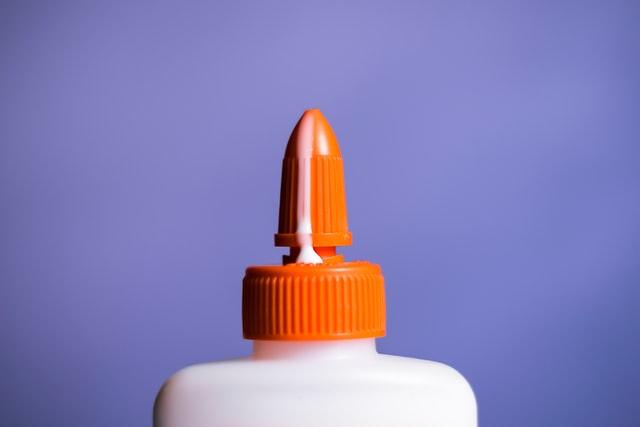
How to Delay Ejaculation?
Male pelvic floor muscles (PFMs) are also involved in ejaculation. Not only has male pelvic floor dysfunction been associated with erectile dysfunction, it is also responsible for dysfunction of ejaculation and orgasm (Source: Rosenbaum TY. Pelvic floor involvement in male and female sexual dysfunction and the role of pelvic floor rehabilitation in treatment: a literature review. J Sex Med 2007; 4:4.)
Pelvic floor therapy has been shown to improve control over ejaculation (Source: La Pera G, Nicastro A. A new treatment for premature ejaculation: the rehabilitation of the pelvic floor. J Sex Marital Ther 1996; 22:22.)
Here’s a refresher on the male pelvic floor muscles. For a more detailed review of the male anatomy, please check our blog on the subject: A Minimalist Guide to the Male Anatomy

So how does ejaculating actually work?
Ejaculation happens through simultaneous contraction of the smooth muscles of the prostate gland, contraction of the smooth muscles of the bladder neck, and relaxation of the smooth muscles of the urethral sphincter (a sphincter is a circular muscle). Contraction of these muscles results in propulsion of the sperm into the urethra through the vas (a muscular tube, about 30 cm/11.8 in long, that connects the epididymis to the urinary tract (urethra) at the back of the bladder). The secretions of the accessory sex organs are added to produce semen.
Rhythmic contractions during ejaculation may act as a “suction-ejection pump,” sucking the seminal fluid into the posterior urethra while relaxed during emission, and ejecting it into the bulbous urethra upon contraction during ejaculation. Involuntary contraction of the bulbospongiosus muscle expels contents from the urethra during ejaculation (Source: Shafik A. The role of the levator ani muscle in evacuation, sexual performance and pelvic floor disorders. Int Urogynecol J Pelvic Floor Dysfunct 2000; 11:361.)
Strong bulbospongiosus muscle contractions may increase maximal engorgement of the corpus spongiosum (our blog on the subject: How do Erections Work?), increase urethral pressure, and facilitate ejaculation of prostatic and seminal vesicle fluid. Strong bulbospongiosus contractions may also enhance and intensify orgasmic pleasure during ejaculation. Therefore, pelvic floor muscle training may act to optimize ejaculatory volume, force, and intensity of sexual climax. (Source: Siegel AL. Pelvic floor muscle training in males: practical applications. Urology 2014; 84:1.)
Premature ejaculation is the most common male sexual dysfunction, negatively affecting the enjoyment of sexual activity for many men and their partners (Source: . Althof SE. Prevalence, characteristics and implications of premature ejaculation/rapid ejaculation. J Urol 2006; 175(3 Pt 1):842.)
The International Society for Sexual Medicine has defined premature ejaculation as ejaculation that always or nearly always occurs prior to or within about 1 minute of vaginal penetration; the inability to delay ejaculation on all or nearly all vaginal penetrations; and negative personal consequences, such as distress, bother, frustration, and/or the avoidance of sexual intimacy. In a large multinational survey, the prevalence of premature ejaculation was found to be 23% overall among participants from the United States, Germany, and Italy (Source: . Porst H, Montorsi F, Rosen RC, Gaynor L, Grupe S, Alexander J. The Premature Ejaculation Prevalence and Attitudes (PEPA) survey. Eur Urol 2007; 51:816; discussion 824.)
The importance of pelvic floor muscle function in the treatment of premature ejaculation is only beginning to be appreciated. Active perineal muscle control could inhibit the ejaculation reflex through intentional relaxation of the bulbospongiosus and ischiocavernosus muscles, but the exact mechanism controlling the ejaculatory reflex remains poorly defined (Source: Pastore AL, Palleschi G, Leto A, et al. A prospective randomized study to compare pelvic floor rehabilitation and dapoxetine for treatment of lifelong premature ejaculation. Int J Androl 2012; 35:528.)
Several therapies are available to treat premature ejaculation, with some of the most successful being pelvic floor treatments. Behavioral therapies involve precoital masturbation, increasing sexual activity frequency, and manual or physical maneuvers intended to delay ejaculation. The squeeze technique described by Masters and Johnson in 1970 makes use of the bulbospongiosus reflex, in which sustained pressure is applied to the glans penis (penis head) causing contraction of the bulbospongiosus muscle and, as a result, diminished ejaculatory urgency (Source: Masters W, Johnson V. Human sexual inadequacy. London: Churchill; 1970.) Apparently, stopping the thrust of intercourse and performing a sustained contraction of the pelvic floor muscles also can function to defer the urgency of ejaculation, serving as an “internal squeeze” without manual pressure.
The application of pelvic floor therapy to the treatment of premature ejaculation is safe and effective, although studies have not yet specifically identified how to appropriately implement muscular strategies. Whether emphasis should be on strength, control, or relaxation is not yet well understood.
Our opinion here at Kegel Hard is that kegel exercises make your muscles stronger. That’s for sure. As such, the involuntary contractions of the bulbospongiosus muscle that gets the semen out can be delayed because of stronger pelvic floor muscles. Dr. Len Kravitz says on Yahoo Health: ”challenging exercise depletes the chemical messengers that carry the messages between nerves and muscle cells. This causes some of the nerves and their corresponding fibers to drop out of service. Since your cells don’t fire all at once – some are contracting as others are relaxing – your body shakes like a car sputtering on a low gas tank. Keep exercising – As you build strength your muscles will be better able to meet the demands of vigorous exercise.”
As for the strategy, we are still investigating, but contracting pelvic muscles to delay ejaculation seems counterintuitive since ejaculation comes from rapid contractions. Instead, we have experienced the greatest success with relaxation, or reverse kegels as some may call that. In a nutshell, trying to pee (and even fart) when you are getting close to cumming seems to help delay the involuntary contractions, especially if one has strong and controlled PFMs from kegel exercises!
(Cohen, Gonzalez, Goldstein. The Role of Pelvic Floor Muscles in Male Sexual Dysfunction and Pelvic Pain Sexual Medicine Reviews, Volume 4, Issue 1, January 2016, Pages 53-62, was extensively quoted in this post)
Read More: How do erections work?



